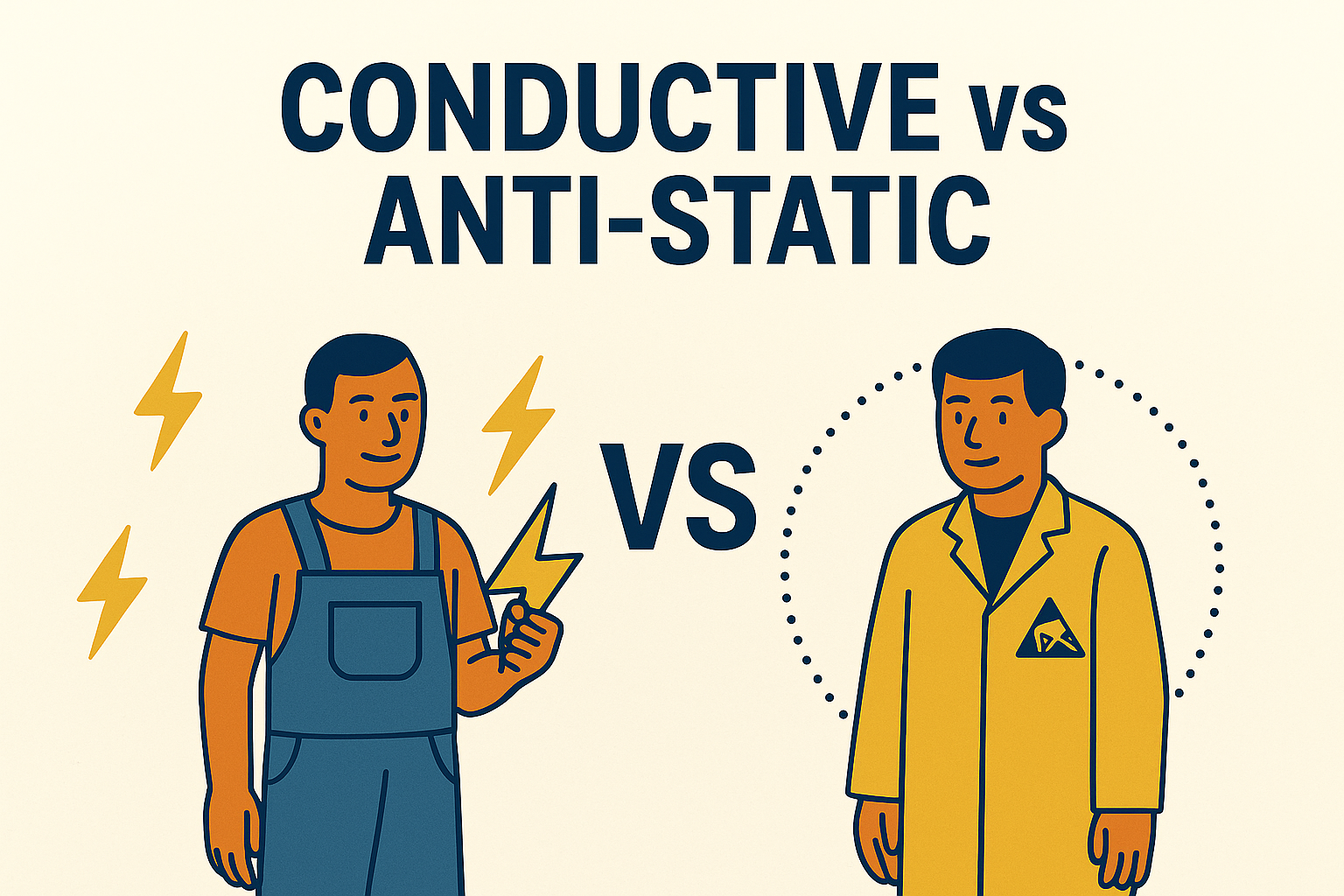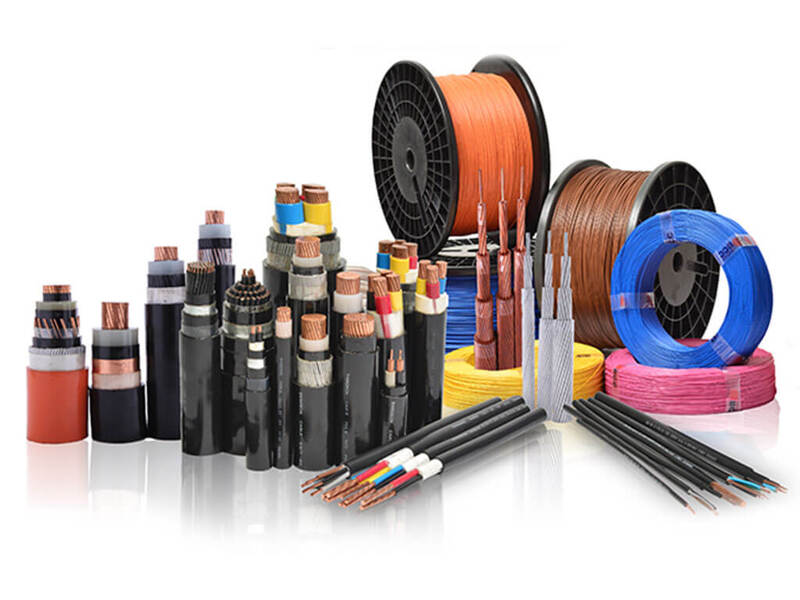Conductive vs. Anti-Static: What Are The Differences?
Have you ever bought a piece of electronics and noticed it came in a special bag labeled “anti-static”? Or maybe you’ve heard someone mention using “conductive materials” when building a workbench or setting up an electronics workspace. These terms might sound similar—but in reality, they describe two very different ways of handling static electricity.
If you're not an engineer, understanding the difference between conductive vs anti-static might seem like a small detail. But if you’re someone who works with electronics, shops for computer parts, or simply wants to keep your devices safe from static shocks, it’s actually a pretty important distinction.
In this article, we’ll explain the meanings of “conductive” and “anti-static” in a simple and approachable way—no engineering degree needed. We'll walk through their differences, where they're used, and help you decide which one you need.
Read more: What Are Insulating Plastics? Properties & Applications

Conductive vs. Anti-static
1. What Do “Conductive” and “Anti-Static” Mean?
Static electricity is all around us. It's the reason you sometimes feel a little zap when you touch a doorknob or take off a sweater. That tiny spark is harmless to you—but when it comes to electronics, static discharge can be much more serious.
That's why special materials—like conductive and anti-static plastics, mats, and packaging—are used in environments where static needs to be controlled.
1.1. Easy explanation of “conductive”
Conductive materials are like expressways for electricity. They allow electrical charges to flow quickly and easily through them. Metals like copper or aluminum are naturally conductive, but there are also conductive plastics that are specially made to carry electrical charges in a controlled way.
In simple terms, when a conductive material touches a charged object, it instantly “soaks up” the static and sends it away—usually to the ground—so it doesn’t build up or spark.
Example: A conductive tray used in electronics factories will safely carry sensitive chips from one station to another without letting static build up.
1.2. Easy explanation of “anti-static”
Anti-static materials, on the other hand, don’t conduct electricity well. Instead of moving charges away, they help prevent static electricity from forming in the first place.
They don’t eliminate static after it forms—they stop it before it starts. Anti-static materials are often used in packaging, clothing, or surface coatings to avoid charge buildup due to friction or movement.
Example: Anti-static bags are used to store computer components so they don’t generate static when handled, even if they aren’t touching any metal or grounded surface.

What Do “Conductive” and “Anti-Static” Mean?
1.3. Simple comparison of how they behave with static electricity
Here’s a quick, non-technical comparison of the two:
| Property |
Conductive |
Anti-Static |
| What it does |
Moves static electricity away quickly |
Prevents static electricity from forming |
| Resistance to electricity |
Very low |
Very high |
| Example use |
Circuit board trays, ESD mats |
Packaging bags, workwear, surface coatings |
| Common material feel |
Smooth, sometimes rigid |
Soft plastic, flexible, slightly textured |
| Key benefit |
Full protection through grounding |
Prevention in low-risk environments |
As you can see, both are useful—but for different reasons.
2. Conductive vs Anti-Static: What’s the Difference?
It’s easy to confuse conductive and anti-static materials because they’re both used to protect against static electricity. But once you understand how they work, the difference becomes clearer.
2.1. Do they handle static electricity the same way?
No. The way they interact with electrical charges is completely different.
- Conductive materials are designed to move static charges away. They allow charges to pass through them quickly and get “grounded,” which means the electricity is safely released.
- Anti-static materials, on the other hand, don’t allow charges to move through them. Instead, they reduce or eliminate the generation of static charges by resisting friction or by using additives that limit charge buildup.
This means conductive materials solve the problem once static exists, while anti-static materials try to prevent the problem from happening.
2.2. Which one protects better?
It depends on the situation.
- If you're handling sensitive electronics, like microchips or circuit boards, conductive materials are often better because they actively eliminate static electricity by transferring it away quickly.
- If you're packaging or storing electronics and want to avoid charge buildup from rubbing or movement, anti-static materials may be sufficient.
Conductive materials generally have very low electrical resistance, which allows electricity to flow through them easily. Anti-static materials have very high resistance, making them less likely to generate static charges in the first place. These different resistance levels are what make them behave so differently.
2.3. Common confusion: anti-static vs static-dissipative vs conductive
Sometimes people also hear about a third category called static-dissipative materials. Here’s how they all compare:
| Type |
Surface Resistance (Ohms) |
Behavior with Static |
| Conductive |
< 10⁵ |
Transfers charges instantly |
| Static-Dissipative |
10⁵ – 10⁹ |
Slowly transfers charges |
| Anti-Static |
> 10⁹ (non-conductive) |
Prevents static from forming |
So yes, anti-static is different from static-dissipative. And neither should be confused with conductive—which is the fastest way to handle existing static.

3. When Should You Use Each Type?
Now that you know how conductive and anti-static materials work differently, the next question is: which one should you use—and when?
3.1. When to use conductive materials
Use conductive materials when:
- You need quick and complete discharge of static electricity
- You're working with very sensitive electronic parts
- You're setting up a workspace where static buildup could damage equipment
- You're transporting or assembling microchips, PCBs, or sensors
Example: A factory that assembles circuit boards might use conductive trays and ESD-safe mats at workstations. This setup ensures any static from a person or tool is instantly transferred away from the sensitive parts.
3.2. When anti-static is enough
Use anti-static materials when:
- You want to prevent static from building up during handling
- The materials will not be grounded but need to stay low-risk
- You’re dealing with packaging, storage, or clothing around electronics
Example: An online store shipping graphics cards might use anti-static bubble wrap. It helps ensure the product doesn’t collect static from rubbing against packaging during shipping.
3.3. Real-life examples (packaging, electronics, workspaces)
| Situation |
Recommended Material |
| Transporting exposed circuit boards |
Conductive tray or box |
| Shipping electronics to customers |
Anti-static bag or film |
| Floor mat in electronics lab |
Conductive or dissipative |
| Uniforms for electronics workers |
Anti-static clothing |
| Cleanroom working surface |
Anti-static or dissipative mat |
In short:
- Use conductive when you need fast protection and grounding
- Use anti-static when you need to avoid static in the first place
4. Quick Summary Table: Conductive vs Anti-Static
Here’s a simplified comparison to help you remember the main differences:
| Feature |
Conductive |
Anti-Static |
| How it works |
Transfers static charges quickly |
Prevents static from forming |
| Electrical resistance |
Very low |
Very high |
| Speed of static handling |
Immediate |
Preventive, not reactive |
| Requires grounding? |
Yes |
Not necessarily |
| Typical use |
Workstations, chip handling, grounding |
Packaging, protective clothing, shipping |
| Best for |
Critical electronics environments |
General prevention in lower-risk settings |
5. Conclusion
When it comes to protecting electronics—or simply being safe around static electricity—understanding the difference between conductive and anti-static materials really matters.
- Conductive materials are designed to move static away immediately. They're best when you're working with sensitive electronics or situations where static could cause damage.
- Anti-static materials are made to prevent static from building up in the first place. They're ideal for packaging, clothing, and general use.
Choosing the right material depends on your environment, your equipment, and how static-sensitive your situation is. If in doubt, it’s always a good idea to ask your supplier or manufacturer for guidance.

Understanding the difference between conductive and anti-static materials really matters.
6. About EuroPlas
EuroPlas is one of the world’s leading manufacturers of plastic compounds and masterbatches, operating seven state-of-the-art factories across Vietnam and Egypt with a total annual capacity of 800,000 tons. Our products are trusted in more than 95 countries worldwide.
Our portfolio includes filler masterbatch, color masterbatch, plastic additives, engineering plastic compounds, and bio-based bioplastics and biofillers under the BiONext and BiOMates brand. Especially, EuroPlas' anti-static additive is used to reduce the static charge build-up on plastic surface, resulting in safer and more effective manufacturing process. With more than 15 years of experience in the plastic industry, we will help you choose the right additives based on your materials, production conditions, and applications.
7. Frequently Asked Questions (FAQ)
Q1: What’s the easiest way to tell if something is anti-static or conductive?
=> Check the label or datasheet. Conductive materials are usually labeled with low surface resistance values, while anti-static items often have a warning or “ESD-safe” mark but high resistance.
Q2: Can a product be both anti-static and conductive?
=> Not typically. They serve different purposes. Some static-dissipative materials fall between both, offering moderate conductivity with anti-static behavior.
Q3: Do I need anti-static bags for my electronics?
=> Yes, especially for sensitive components like RAM, CPUs, and GPUs. Even a small static charge can cause damage during handling or shipping.
Q4: Why do some floors or mats say “ESD-safe”?
=> These surfaces are often conductive or static-dissipative, meaning they help control or discharge static electricity. They're designed for use in workspaces with sensitive electronics.
Q5: Are these materials dangerous?
=> Not at all. Conductive and anti-static materials are safe to handle. Their main role is preventing damage from static electricity—not conducting hazardous electrical current.